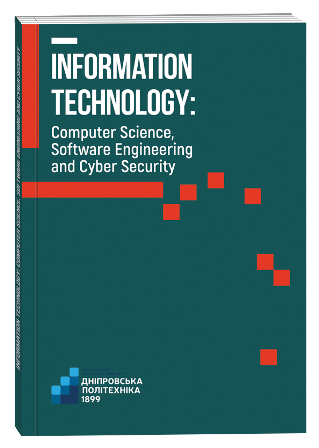MODERN APPROACHES AND CHALLENGES IN COMBINING OCR AND NLP TECHNOLOGIES FOR AUTOMATED PRINTED TEXT ANALYSIS
DOI:
https://doi.org/10.32782/IT/2025-1-14Keywords:
OCR, NLP, deep learning, transformers, automated text analysis, multilingualism.Abstract
The article examines modern approaches to the integration of OCR and NLP technologies for automated analysis of printed texts. A comparative analysis of OCR and NLP methods is presented, focusing on recognition accuracy, multilingual support, and contextual understanding. Particular attention is paid to neural networks, transformer-based models (such as TrOCR, BERT, GPT), and deep learning algorithms that ensure high efficiency in text processing. A new approach to OCR-NLP integration is proposed, which enhances both the accuracy and processing speed of such systems and enables their adaptation to various text formats. The practical value of the study lies in its applicability across domains such as education, medicine, law, and logistics. The main advantages and challenges of integrated systems are outlined, including computational complexity, sensitivity to image quality, and the need for high-quality training data. The objective of the study aims to explore current approaches to integrating OCR and NLP technologies for automated printed text analysis. The objective is to increase the accuracy, efficiency, and processing speed of such systems through the use of neural networks, transformers, and machine learning algorithms. Methodology. The article presents a comparative analysis of existing OCR and NLP methods, focusing on recognition accuracy, multilingual support, and contextual understanding. The performance of various approaches is evaluated based on processing speed and adaptability to different text formats. The novelty of this study a new approach to OCR-NLP integration is proposed, optimizing both recognition accuracy and processing speed. Unlike traditional methods, the study emphasizes the synergy between cuttingedge deep learning techniques and conventional text recognition strategies. The results. The integration of OCR and NLP technologies opens new opportunities for automated printed text analysis, significantly improving data processing accuracy and efficiency. Further research should focus on enhancing algorithm speed and adapting to handwritten and multilingual texts to expand the scope and effectiveness of such systems.
References
Smith R. An Overview of the Tesseract OCR Engine // Ninth International Conference on Document Analysis and Recognition (ICDAR 2007) Vol 2, Curitiba, Parana, Brazil, 23–26 September 2007. P 1–5. https://doi.org/10.1109/icdar.2007.4376991
Martin J. H., Jurafsky D. Speech and Language Processing. 2nd ed. Prentice Hall, 2008. P 1–29.
Teaching Text Classification Models Some Common Sense via Q &A Statistics: A Light and Transplantable Approach / H. Tao et al. Natural Language Processing and Chinese Computing. Cham. Springer International Publishing. 2022. P. 593–605. https://doi.org/10.1007/978-3-031-17120-8_46
Hochreiter S., Schmidhuber J. Long Short-Term Memory. Neural Computation. 1997. Vol. 9, no. 8. P. 1735–1780. https://doi.org/10.1162/neco.1997.9.8.1735
Окунькова О. Сучасні інформаційні технології аналізу україномовних текстів. Вісник Кременчуцького національного університету імені Михайла Остроградського. 2023. No. 1. P. 1–7. https://doi.org/10.32782/1995-0519.2023.1.10
Efficient Estimation of Word Representations in Vector Space / Mikolov T., Chen K., Corrado G., Dean J. 2013. P 1–12.
End-to-End speech recognition: a survey / R. Prabhavalkar та ін. 2023. С. 1–27.
Attention is all you need / A. Vaswani та ін. 2023. С. 1–15.
Confidence-Aware document OCR error detection / A. Hemmer та ін. 2024.
Survey of Post-OCR Processing Approaches / T. T. H. Nguyen et al. ACM Computing Surveys. 2021. Vol. 54, no. 6. P. 1–37. https://doi.org/10.1145/3453476







